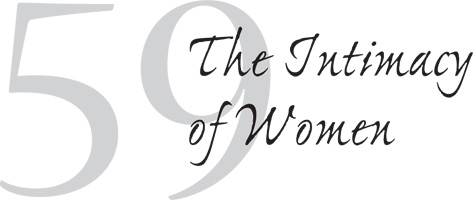

BATHS OF ANDALUCÍA
No one prizes water more than desert people. In Spain, the Moors left a legacy of shady courtyards with burbling fountains and gently flowing channels of water. Architects as much of delight and illusion as of space, they knew that even the sight and sound of running water would evoke a sensation of cool refreshment.
But the body craves more. The Moors also built on the tradition of the Roman thermal bath, introduced to the Iberian peninsula centuries earlier, to create facilities that merged aesthetic beauty and engineering ingenuity. The goal may have been to keep the populace clean and healthy, but even in those practical times, people knew that a good soak could also be restorative to the mind and spirit. Pools of water of different temperatures are the essential feature of the bath. The Romans generally started in the cool pool and worked up to the hot, while the Moors preferred to end in the cool.
In Andalucía, remains of ancient baths in Córdoba, Granada, and Ronda offer good opportunities to appreciate the lovely but functional architecture—with the signature star-shaped openings in the ceiling to let in light. But admiring the baths in the abstract is no substitute for a sybaritic soak. Fortunately, the tradition of the hammam, or bath, has enjoyed a revival in the past twenty years. Modern versions have popped up in Granada, Córdoba, Málaga, Jerez, Almería, and Sevilla, where Aire de Sevilla—a hybrid of Roman and Moorish traditions with modern plumbing—is a good example. It opened around the turn of the millennium in a sixteenth-century palace in the heart of the old city. Like most of its kind, it offers optional massages and even a vigorous scrub, but concentrates on the pleasures of the pools.
Truth is, these days we have easier and more efficient ways to simply get clean in the privacy of our homes. But there is an elemental appeal to the ritual of the bath, an intimate experience shared with like-minded souls. The Arabic word hammam translates as “spreader of warmth,” but its meaning, I think, goes well beyond the physical experience of immersing yourself inch by inch in a pool of water that at first seems so hot you want to jump out of your skin. It’s about the warmth of belonging in a safe, comfortable, soothing place. For women, who were historically isolated in their homes, the bath was a treasured opportunity to relax in the company and comfort of other women.
In our day, many baths no longer maintain the tradition of keeping genders apart in either separate facilities or during separate hours. While I’m usually all for gender equality, I think this is a misstep. The last time I visited Aire de Sevilla, a few men had accompanied the women in their lives, but their demeanor suggested that it was more a duty than a joy. For one thing, they were learning firsthand that the image of the bath as a place where women primped for seduction was more a fantasy promulgated by Romantic writers and painters than a reality.
That’s not to say that the experience isn’t sensual. But a woman should relish it as a special, personal pleasure. So visit with a few close female friends—or almost better, by yourself. In ancient times, taking a soak was one of the best ways to catch up on gossip. Today we have an onslaught of information and the bath is much better used as a place to unplug from everything, even idle chat.
By herself, a woman can find her own rhythm, following candle-lit lanterns from space to space. The ritual usually starts in a steam room where the moist heat loosens your body and the aroma of eucalyptus opens your breath. After that, a cool shower brings the body back to attention.
Five chambers of water await, and the order of experiencing them is entirely up to you. I could spend all my alloted time in the salt pool, where it is impossible not to float like a cork. The feeling of weightlessness is pure joy, and when I lie back in the water until my ears are submerged, I can hear the blood thrum in my temples. This, I imagine, is what the womb must have felt like had I been conscious enough to enjoy it.
Aire de Sevilla’s sequence of warm (96.8°F), hot (104°F), and icy cold (61°F) pools all link up together. For me, which order I take them is a matter of listening to my body’s dictates. Does it want to be coddled or challenged? Cooked or chilled? Like most people at the bath, I end in the final warm pool with hydromassage jets. The gentle bubbles seem to complete the process of bringing mind and body into harmony.
Medicam mens sana in corpore mundum, as the Romans might have said: Soothed mind in a clean body.